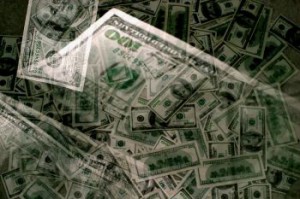By: Steve Watson
Infowars.net
Wednesday, Nov 3rd, 2010
Source: http://infowars.net/articles/november2010/031110Fed.htm
Analysts, Economists, Even Fed Employees Warn Against Disastrous QE2
 A number of prominent figures within the financial world are warning that a second round of quantitative easing, expected to be announced today by the Federal Reserve, will have disastrous consequences for the US dollar and the global economy.
A number of prominent figures within the financial world are warning that a second round of quantitative easing, expected to be announced today by the Federal Reserve, will have disastrous consequences for the US dollar and the global economy.
The Fed will release a statement this afternoon, most likely confirming that it is to buy at least $500 billion of long-term securities, in the form of printing money out of thin air.
The justification is to offset deflationary fears and stimulate spending, however, critics have refuted this outlook.
Peter Schiff, CEO of Euro Pacific Capital notes:
“At the end of the day, all this deflation talk is a red herring. The true purpose of QE 2 is to disguise the decreasing ability of the Treasury to finance its debts. As global demand for dollar-denominated debt falls, the Fed is looking for an excuse to pick up the slack. By announcing QE 2, it can monetize government debt without the markets perceiving a funding problem.”
“I think that this will quite possibly be the worst mistake by the Fed in a generation,” adds Stephen Stanley of Pierpont Securities.
Bill Gross, the manager of the world’s largest mutual fund, told Reuters on Monday that he fears that the measures will result in a catastrophic decline in the value of the dollar:
“I think a 20 percent decline in the dollar is possible,” Gross said.
“When a central bank prints trillions of dollars of checks, which is not necessarily what (a second round of quantitative easing) will do in terms of the amount, but if it gets into that territory—that is a debasement of the dollar in terms of the supply of dollars on a global basis,” Gross told Reuters in an interview at his PIMCO headquarters.
“QEII not only produces more dollars but it also lowers the yield that investors earn on them and makes foreigners, which is the key link to the currencies, it makes foreigners less willing to hold dollars in current form or at current prices,” Gross added.
The Fed seems unconcerned that the public impression it is creating is that it is clearly acting to debase the US dollar.
“It’s a desperate act,” says Jeremy Grantham, co-founder of the investment firm GMO. Grantham says it’s a clear message from the Fed to the rest of the world: “The U.S. doesn’t care if the dollar weakens.”
James D. Hamilton, a University of California, San Diego economist notes that Bernanke may risk increasing expectations for higher inflation by too much, causing a shake- up in currency and bond markets.
“That perception alone would bring about a series of immediate challenges, such as a rapid flight from the dollar, commodity speculation and possible under-subscription to Treasury auctions,” said Hamilton, a former visiting scholar at the Fed board and the New York and Atlanta district banks.
“The real ugly question is, will this ultimately end up being inflationary?” said Scott Minerd, the Santa Monica, California-based chief investment officer at Guggenheim Partners LLC, who helps oversee $76 billion. “In the long run, five to 10 years from now or in the next decade, this is going to be a massive problem.”
The London Telegraph’s International Business Editor, Ambrose Evans-Pritchard, agrees with this outlook, noting that QE2 risks currency wars and the end of dollar hegemony:
“The Fed’s “QE2” risks accelerating the demise of the dollar-based currency system, perhaps leading to an unstable tripod with the euro and yuan, or a hybrid gold standard, or a multi-metal “bancor” along lines proposed by John Maynard Keynes in the 1940s.” Evans-Pritchard writes, referring to the stated intention to institute a new global currency out of the ashes of the crippled world economy.
The most noted critics of the plan, however, have been Fed members themselves who fear the plan is dangerous, unnecessary “bargain with the devil” that will fuel long-term inflation.
As reported by Bloomberg:
Kansas City’s Thomas Hoenig, who has already dissented six straight times, said Oct. 25 that he opposes more easing and because it’s “a very dangerous gamble” that may accelerate inflation and create asset price bubbles. Dallas Fed President Richard Fisher and the Philadelphia Fed’s Charles Plosser have also spoken out since the FOMC’s last meeting against more action by the central bank.
In addition, Minneapolis Fed President Narayana Kocherlakota has questioned whether QE2 will work. Richmond Fed President Jeffrey Lacker has also seemed to doubt whether it is necessary.
Instead they say that the markets should be allowed to correct themselves.